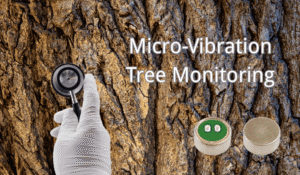보청기를 착용해 본 사람이라면 누구나 보청기가 조용한 환경에서는 잘 작동하지만, 바쁘거나 시끄러운 환경에서는 주변 소음에서 말소리를 구분하는 데 어려움을 겪을 수 있다는 것을 알고 있습니다. 소음 감소는 보청기의 품질을 나타내는 중요한 지표이므로 어떻게 선택해야 할까요?
많은 사용자가 시끄러운 거리 환경보다 피팅룸에서 말하는 것이 훨씬 더 선명하다는 것을 알아챘습니다. 이러한 차이는 환경 소음이 말을 방해하여 소리가 들리더라도 명확하게 듣기 어렵기 때문에 발생합니다. 이 문제를 해결하기 위해 보청기 가격 차이의 주요 요인 중 하나인 보청기 소음 감소 기술에 대해 논의해야 합니다.

구형 보청기 소음 감소 기술
구형 보청기는 칩 기술의 한계로 인해 음성과 소음을 완전히 구분할 수 없었습니다. 일반적으로 기본적인 다중 채널 압축을 사용했습니다. 간단히 말해, 소음이 저주파에서 발생하는 경우가 많기 때문에 이러한 장치는 시끄러운 모드에서 저주파 소리의 증폭을 자동으로 줄여 일부 소음을 '필터링'합니다.
이 방식을 사용하면 청취가 더 편안해지지만 저주파 소음과 유사한 음성을 걸러낼 수도 있습니다. 결과적으로 음성의 선명도가 완전히 최대화되지 않아 전반적인 사운드 재생 품질이 저하됩니다.
새로운 보청기 소음 감소 기술
스마트 칩 기술의 발달로 현대 보청기는 이제 소음 억제(칩 기술)와 마이크 기술 등 여러 기술을 결합한 더욱 진보되고 다양한 소음 감소 기술을 사용합니다.
1. 소음 억제
소음 억제는 최신 보청기에 사용되는 표준 소음 감소 기술입니다. 구형 장치와 달리 새 모델은 시간 및 진폭 영역 모두에서 디지털 신호 처리를 사용하여 음성과 소음을 분석하고 구분합니다. 그런 다음 프로세서는 모든 소리를 무차별적으로 압축하는 대신 소음에 대한 증폭을 줄이고 음성에 대한 증폭을 향상시킵니다.
하지만 삶의 질에 대한 사용자의 요구가 높아지면서 기본적인 소음 억제 기능만으로는 더 이상 모든 사람의 요구를 충족시킬 수 없게 되었습니다. 매우 시끄럽고 복잡한 환경에서는 소음이 부드러워질 수 있지만 음성 향상 기능이 여전히 불충분할 수 있습니다. 많은 사용자가 여전히 까다로운 청각 환경에서 음성을 이해하는 데 어려움을 겪고 있습니다.
2. 마이크 기술
마이크 기술은 시끄러운 환경에서 보청기 성능을 개선하는 데 중요한 역할을 합니다. 다음은 최신 보청기에 사용되는 몇 가지 주요 마이크 유형입니다:
(1) 고정 지향성 마이크
일상 생활에서 소음은 앞, 뒤 또는 옆에서 발생할 수 있습니다. 많은 보청기에는 지향성 마이크 또는 주 음원을 자동으로 식별할 수 있는 마이크가 장착되어 있습니다. 이러한 마이크는 사용자가 일반적으로 의사소통을 하는 전면의 소리를 증폭하는 동시에 측면과 후면의 소리를 줄여 원치 않는 소음을 효과적으로 억제합니다.
어느 정도 경험이 쌓이면 시끄러운 환경에서 머리 위치를 조정하여 주변 소음을 최소화할 수 있습니다. 예를 들어, 시끄러운 식당에서 사용자는 의자를 움직여 주방이나 기타 소음을 줄일 수 있습니다.
(2) 자동 지향성 마이크
현재 대부분의 어린이용 보청기에는 자동 지향성 마이크가 탑재되어 있습니다. 어린이는 수동으로 조정할 수 있는 청취 경험이 부족할 수 있으므로 이러한 마이크는 자동으로 정면에서 소리를 선택하고 증폭하는 동시에 주변 소음을 줄여줍니다. 이 기능의 품질은 사용되는 기술의 정교함에 따라 달라집니다.
(3) 적응형 방향성(다중 채널)
많은 중-고급형 모델에서 볼 수 있는 이 기능은 환경에 따라 마이크의 방향성을 조정합니다. 적응형 지향성 마이크는 마이크의 초점을 자동으로 조정할 뿐만 아니라 소음원을 식별하여 이를 억제합니다. 일부 고급 모델은 여러 개의 소음원을 추적하여 동시에 소음을 줄일 수 있습니다.
(4) 무지향성 마이크
일부 특정 상황에서는 지향성 마이크가 최선의 선택이 아닐 수도 있습니다. 예를 들어, 운전할 때 보청기가 후방의 소음을 줄이는 데 초점을 맞추면 뒷좌석 승객의 소리를 듣지 못할 수 있습니다. 무지향성 마이크를 사용하면 모든 방향의 소리를 똑같이 들을 수 있으므로 음악당과 같이 여러 방향에서 소리가 들리는 환경에서 더 나은 경험을 제공합니다. 이러한 설정에서는 기기가 자동으로 무지향성 모드로 전환되어 청취 환경을 최적화할 수 있습니다.
(5) 지향성 마이크가 장착된 맞춤형 보청기
심이도 장치와 같은 일부 맞춤형 보청기는 복잡한 마이크 기능을 위한 공간이 제한되어 있을 수 있습니다. 이러한 경우 사용자는 외이의 구조에 더 의존하여 소리의 방향과 음질을 조절하기 때문에 음성을 식별하고 증폭하는 데 효과적이지 않을 수 있습니다.
노이즈를 완전히 제거할 수 있나요?
현재 모든 소음을 완전히 제거하거나 정상 귀의 청각 경험을 완벽하게 재현할 수 있는 보청기는 없습니다. 하지만 정상 청력을 가진 사람들도 시끄러운 환경에서 생활하고 주변 소음 속에서 대화를 해야 한다는 점을 기억해야 합니다. 소음은 일상 생활의 일부이며, 정상 청력을 가진 사람들이 소음으로 인해 어려움을 겪는 것처럼 보청기 사용자도 비슷한 문제에 직면합니다. 보청기에 대한 만족도를 높이려면 소음 감소에 대한 현실적인 기대치가 중요합니다.
또한 더 나은 소음 감소 기술을 갖춘 보청기의 가격이 더 높은 경우가 많다는 점도 주목할 필요가 있습니다. 따라서 사용자의 필요에 맞는 장치를 찾는 것이 최고의 가치를 제공할 것입니다.
보청기용 ECMIC 마이크 부품
시끄러운 환경에서도 선명한 사운드를 제공하는 보청기 마이크(ECM-B4015AML39-733)

ECMIC은 다음을 전문으로 제작합니다. 고품질 일렉트릿 마이크와 같은 ECM-B4015AML39-733보청기 애플리케이션을 위해 특별히 설계되었습니다. 다음과 같은 기능을 제공합니다. 고감도 (-39dB) 및 뛰어난 신호 대 잡음비 (74dB)의 마이크는 소음이 심한 환경에서도 뛰어난 사운드 선명도와 향상된 음성 인식 기능을 제공합니다. 이 마이크는 선명하고 일관된 음질을 제공하도록 제작되어 보청기 사용 환경을 개선하는 데 기여합니다.
마이크 구성 요소와 이를 통해 보청기 디자인을 개선하는 방법에 대한 자세한 내용을 확인하세요, 지금 바로 문의하세요.


